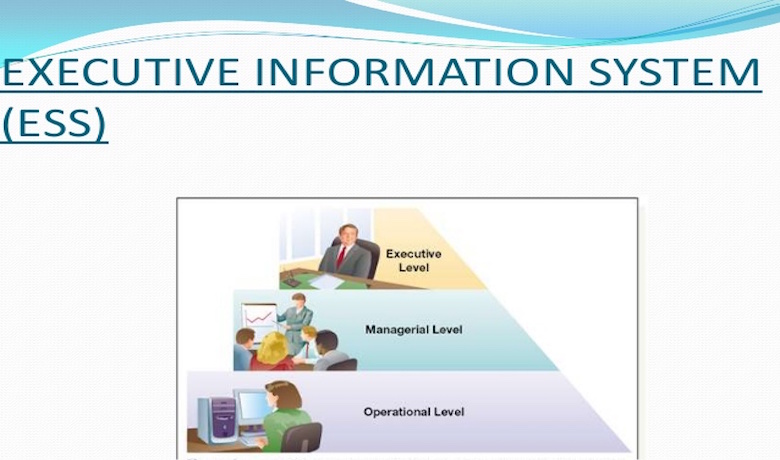Executive Information System: EIS is an information system based on computer which generally serves the information needs of the top level management of an organization.
Quick Links
Executive Information System
What’s An Executive Information System?
We read earlier about various information systems such as
Now, let us study another system called the Executive Information System.
What is Executive Information System?
Users can extract much needed information without the hardship to learn complex query language or any difficult formulae. It enables the users to get information on time without any delay. It enables users to have access to management reports.
EIS system is very fast. It is capable of accessing both internal as well as external data. EIS basically provides various online options with which the report analysis can be done in detail. EIS provides its users with drill down facility and reporting tools. EIS can also be used to make decision just like Decision Support System. EIS helps management to monitor performance of the organization and thus helps organization to achieve its goals and objectives in the long run. With the introduction of Artificial Intelligence, EIS has lost its importance to a little extent.
HOW AN EIS SHOULD BE?
- EIS should be very easy to understand so that the users do not get confused while using it. A user friendly EIS can help management to save time and collect information rather easily.
- EIS should be such that it helps in achieving organizational objective. EIS data should clearly reflect objectives of the organization in various core fields of the organization.
- EIS should be such that it encourages staff & management to work towards growth of the organization.
- EIS must be such that it meets the changing needs of the organization.
- EIS should help to reduce the workload of the top management and staff.
- Confidential Information should not become part of the EIS.
COMPONENTS OF EIS
- USER INTERFACE: User Interface allows the users to communicate with the EIS. User interface must be easy to use and understand. Users should not be required to understand the complex query languages and other mathematical or statistical formulas.
- HARDWARE: Hardware refers to devices by which users give input, data processing and the output is received. Users may give input via keyboard and mouse and CPU may be used for processing and output may be received on monitor or from printer.
- SOFTWARE: Software is required for various calculations, providing graphical view to the management, storing data in the form of Information, etc. Software allows user to get information in the form it is actually required.
- TELECOMMUNICATION: In today’s world the most important thing is communication. Users may require transferring information from one point to another point. The information might be a little confidential in nature. The secrecy of the information should be well maintained.
Related Articles
- Transaction Processing System
- Knowledge Management System
- Expert System In Business
- Business Entity Concept
APPLICATIONS OF EIS
- MANUFACTURING: It determines whether a process is running correctly or not. It helps in ensuring proper quality control of finished goods. It measures the actual process time and compares with the standard time required for the process. It provides management with daily production report, daily consumption report, safety stock report, economic order quantity, etc.
- FINANCIAL: Every organization needs to ensure financial activities are running sound. EIS may help to analyze whether payment has been realized from creditors within stipulated period of time. It can help management in managing various other sources of finance.
- ACCOUNTING: It helps in proper accounting and disbursement of accounting functions.
ADVANTAGES
- EIS is easy for use and saves time of the top level management of the organization.
- EIS provide access to timely information in a rapid manner.
- EIS provides extensive online analysis tools.
- EIS can easily be given a DSS support.
Recommended Articles

